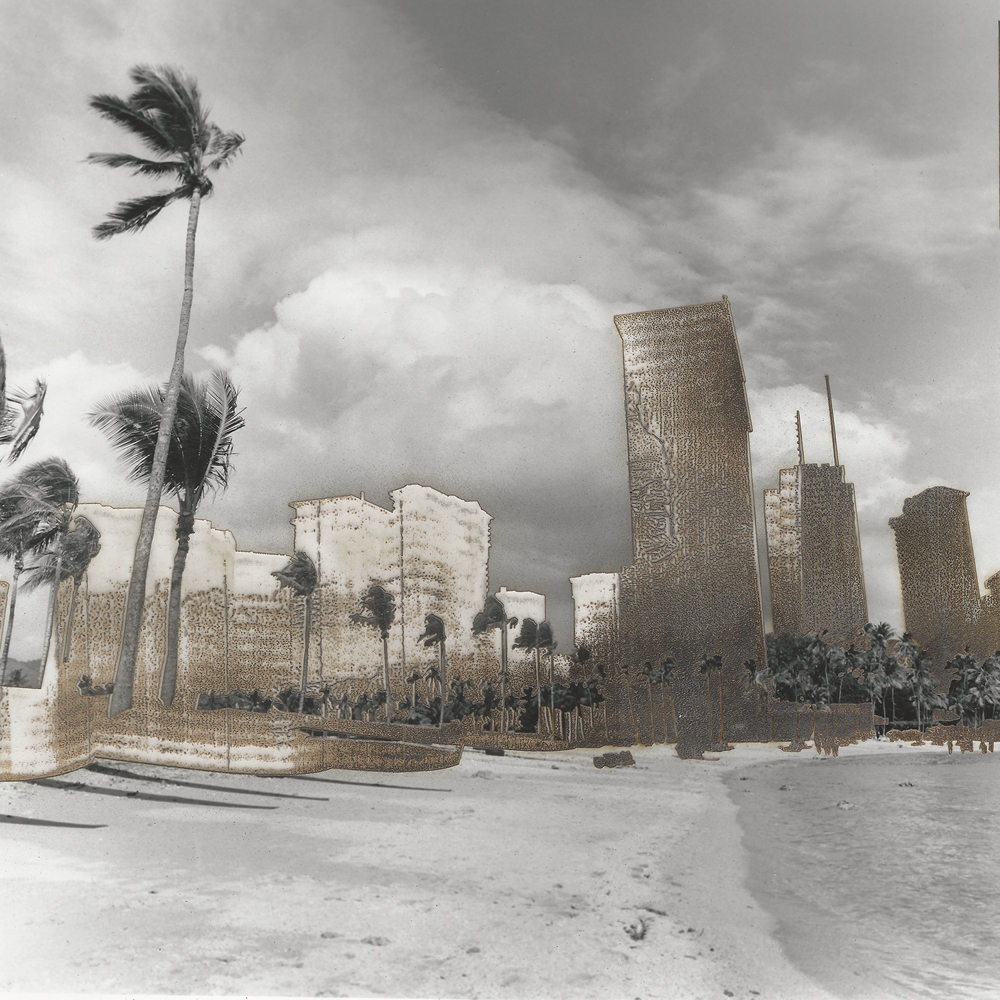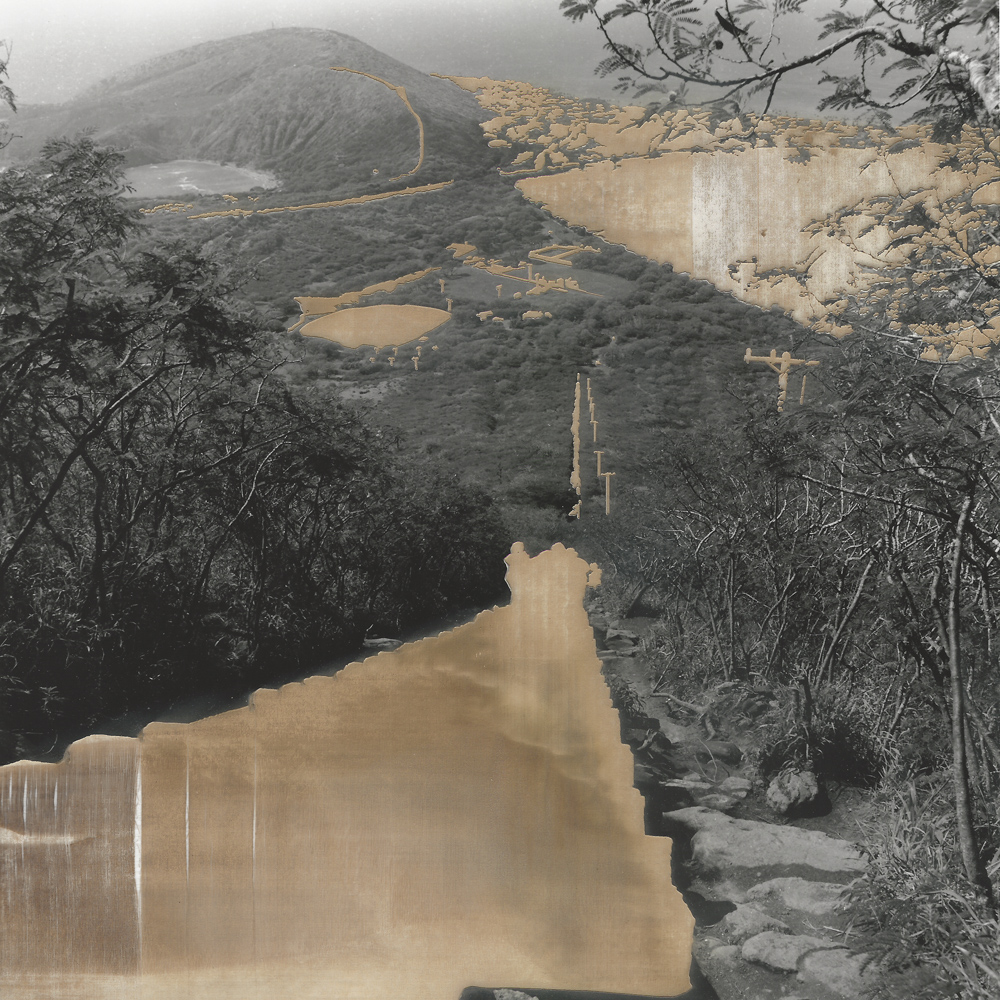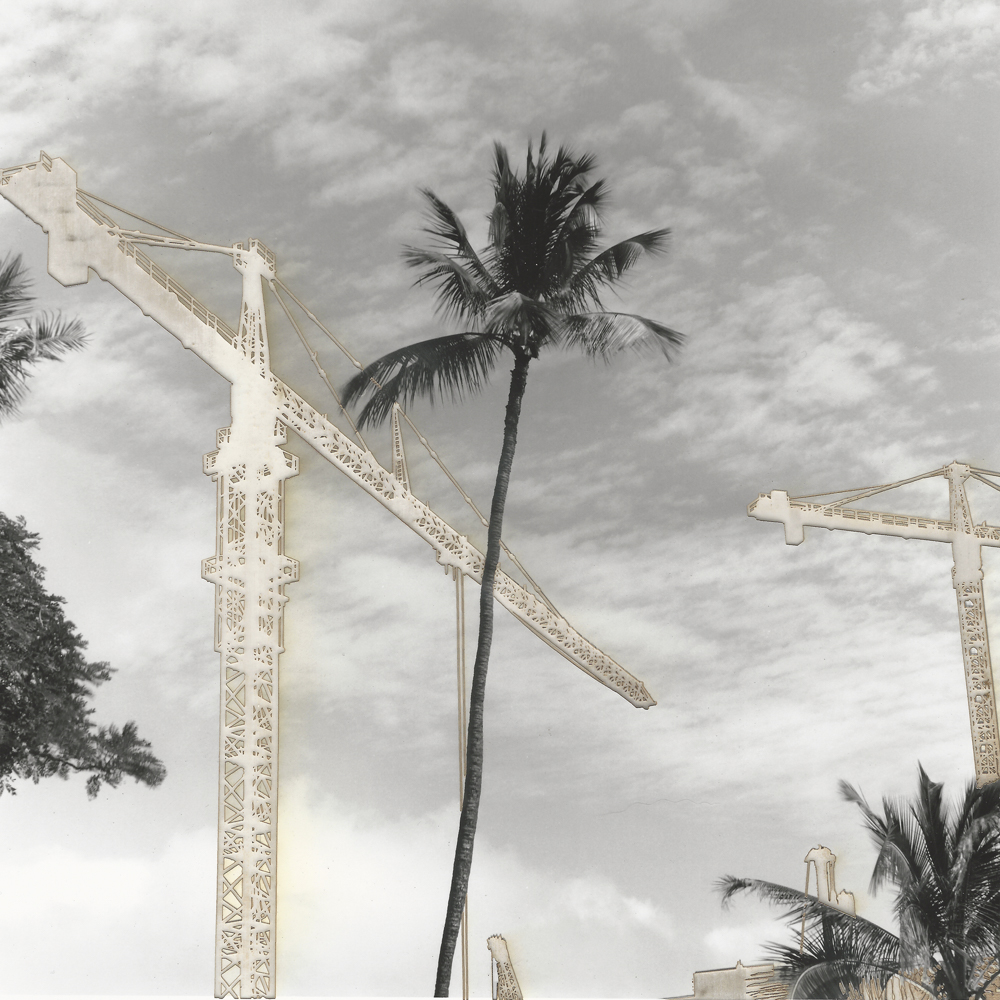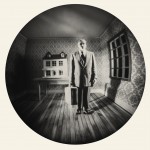Thesis Project: Leah Schretenthaler
When looking at Leah Schretenthaler‘s work, what excited me the most was it’s place as a new investigation into a very heavy mythologized geographic location. Hawaii has long been a place of interest for photographers, and for good reason, but Leah’s work feels like it takes all of that and flips it on it’s head. Seeing traditional darkroom processes combined with new technological practices is a refreshing take on what a darkroom print is and should look like.
The Invasive Species of the Built Environment
The land of Hawaii is vast, luxurious, and idyllic, but past the wanderlust images the land is very controversial. The growing population and tourism continues to threaten the space and its ability to accommodate all the occupants. From the research telescopes on the mountain of Maunakea on the Big Island, to the crumbling rail project on Oahu believed to fix the traffic problem, these infrastructures have augmented the land. The industrial growth happening in Hawaii goes beyond simply manipulating the landscape; it destroys the historical records and spiritual places that have existed there for millions of years. Through these photographs, the attention focuses on the spaces that these infrastructures impede on the natural environment, instead of colors of the idyllic Hawaii. Using silver gelatin prints which consist of selected, man-made spaces that have been attempted to be removed, create a burnt and sometimes empty area. The use of a laser cutter to cut the structure from the landscape leaves scar upon the image. The removed spaces aid in seeing what Hawaii would be like without these impositions. The areas that have been removed from the images are not being replaced with anything and therefore communicate the natural impingement this structure has on the environment, even if it were to be removed. However, the process of trying to remove these objects has weakened the paper and metaphorically weakened the landscape it is trying to depict. The areas that have not been completely removed leave a faint and thin layer of paper residue. The structures still exist and can never be completely erased. However, it draws attention to what is becoming the built environment in Hawaii. These invasive infrastructures have impinged on the natural environment. Although these images discuss visually the reality of Hawaii, it brings to light that this is not a one-state problem. Much like the invasive species that we eradicate from our gardens and fields, so too should we approach these human invasions onto the landscape. No longer should humanity build for the sake of building; but should instead question the social and political concerns that exist in the natural world. – Leah Schretenthaler

© Leah Schretenthaler, Hawaii Kai Valley and Lagoons from Koko Head, 2020, Laser Etched Silver Gelatin Print
Leah Schretenthaler was born and raised in Hawaii. She is currently an MFA candidate. Through her art practice, her research presents a connection between land and materiality. Her work has been displayed and published nationally and internationally. Most recently she has been named in LensCulture’s Emerging Talents of 2018, awarded 2nd in Sony World Photography Awards, and was also awarded the Rhonda Wilson Award from Klompching Gallery in FRESH2019.
Keep up with Leah Schretenthaler’s work here.
Instagram: @leah_schretenthaler
Posts on Lenscratch may not be reproduced without the permission of the Lenscratch staff and the photographer.
Recommended
-
The 2024 Lenscratch 3rd Place Student Prize Winner: Mehrdad MirzaieJuly 24th, 2024
-
Charles Shuford: Blue is For BoysJuly 12th, 2024
-
Sarah Lazure: SarahJuly 11th, 2024
-
Kirsten Hoving: Fabricated VisionsJuly 10th, 2024
-
Gary Owens: In the RoomJuly 9th, 2024

























































































